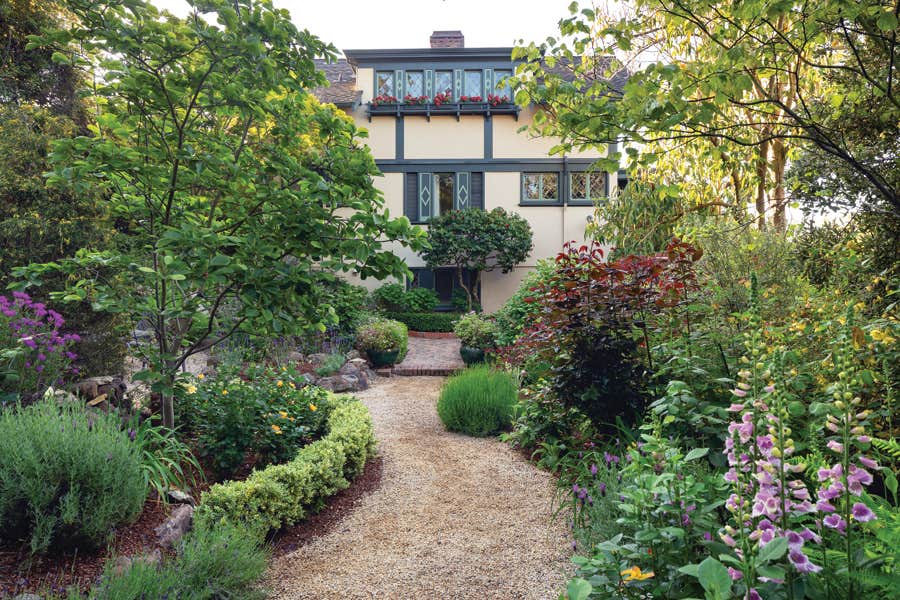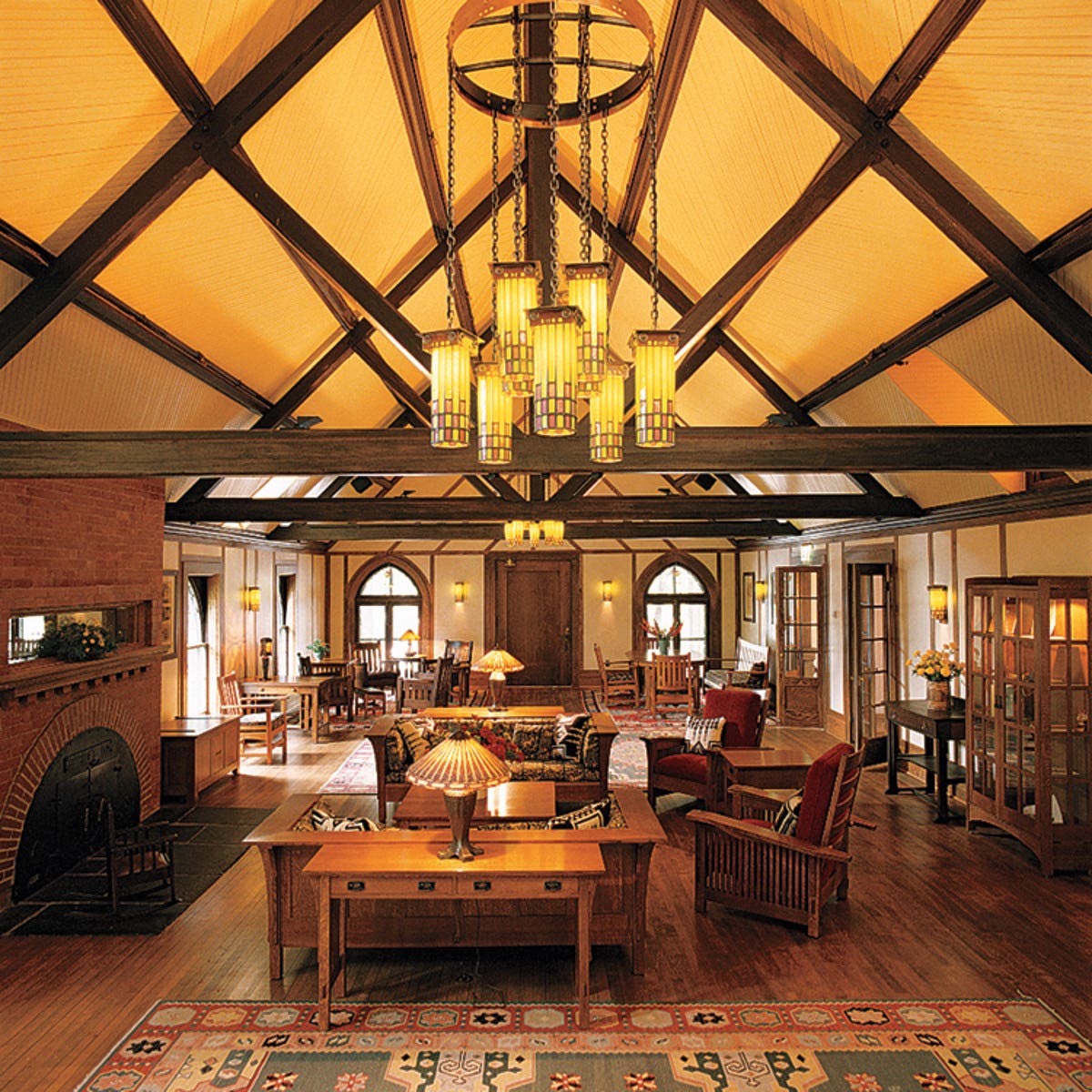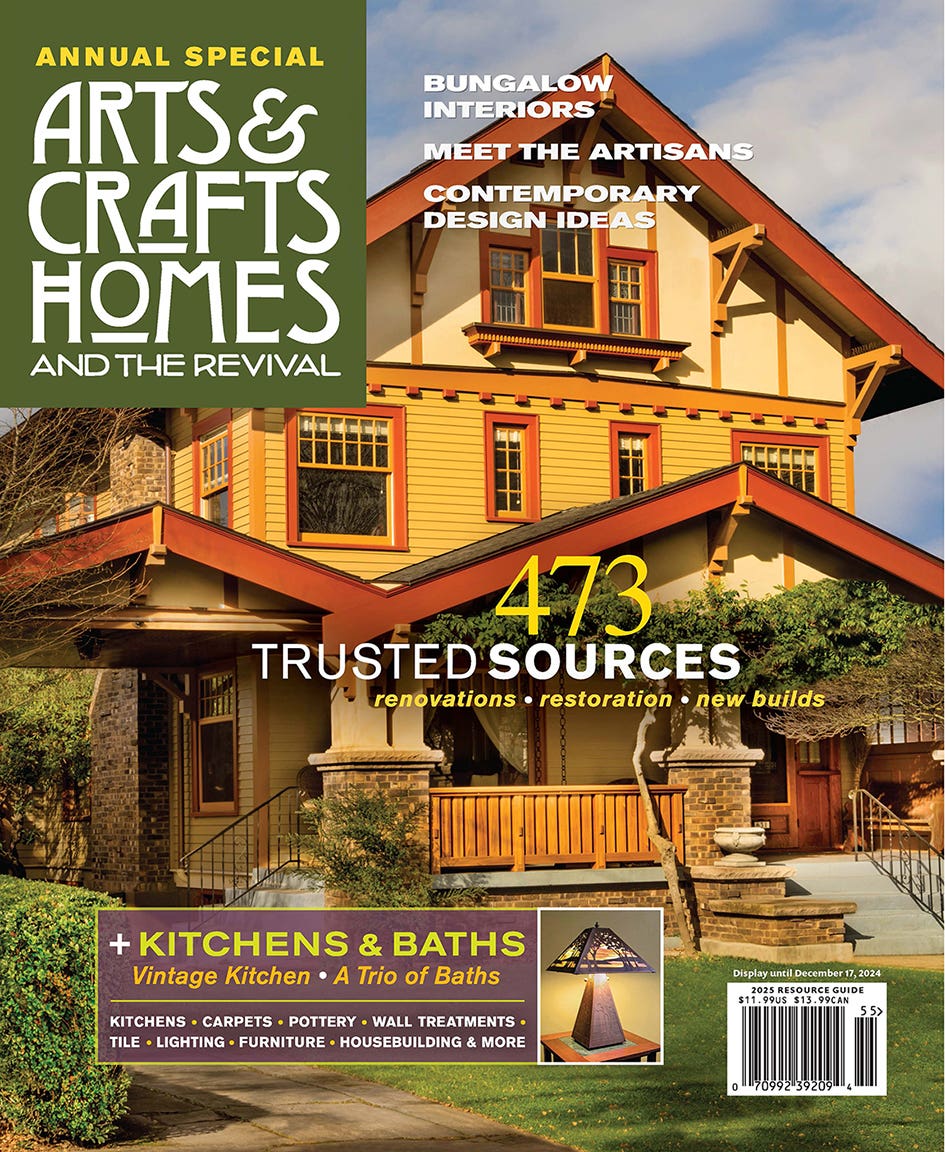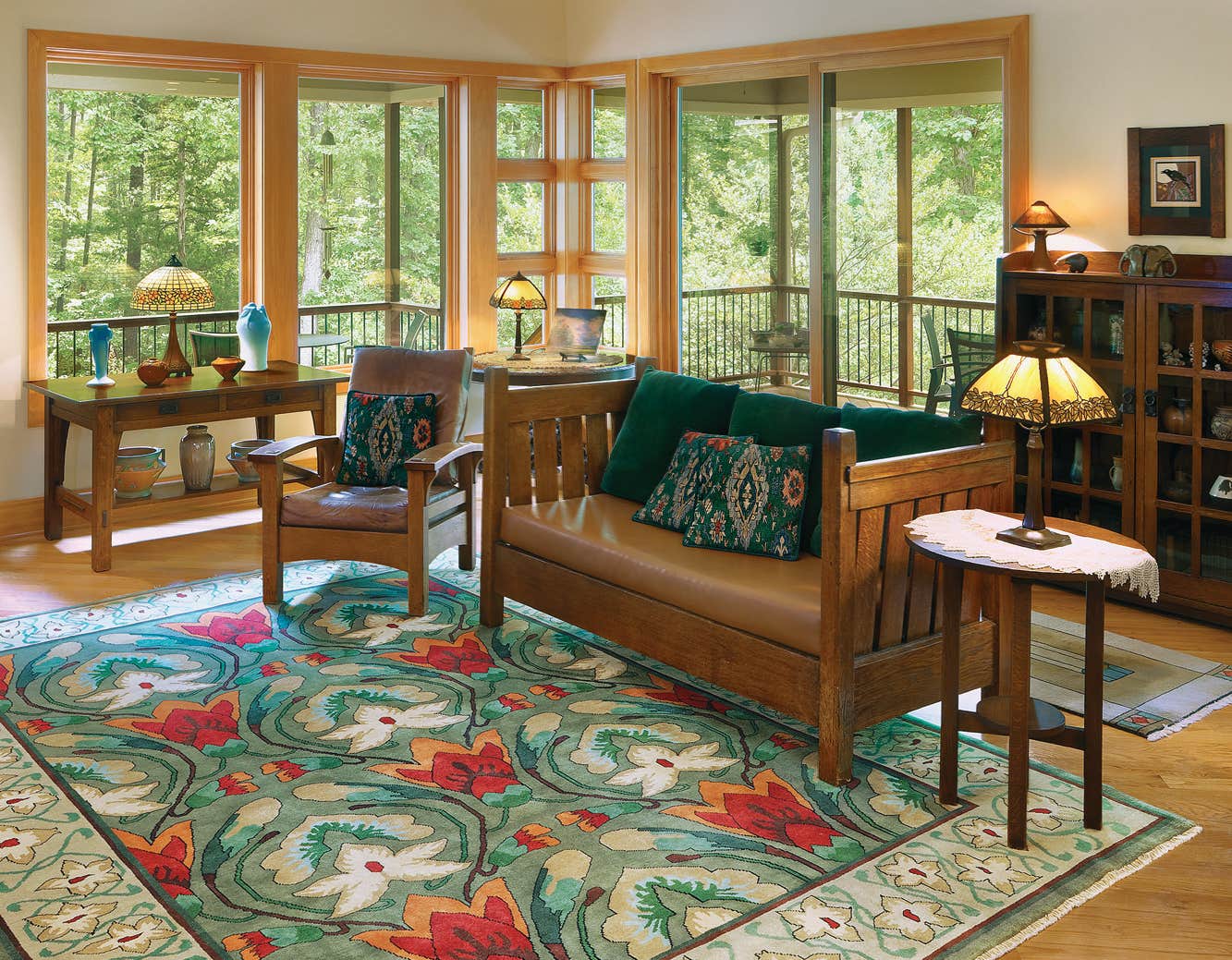New Arts & Crafts Work
The past continues to influence today’s interpretive new Arts & Crafts house.
The lessons of preservation are evident in new Arts & Crafts houses—lessons that touch on appropriateness, awareness of locale, and respect for the past. The long unacknowledged influence of the Arts & Crafts movement can’t be denied: Arts & Crafts has always been modern. It brings the environment indoors. It is sensitive to local materials and vernacular building traditions. These themes are paramount again today as architects embrace new technology and more environmentally responsible building practices.
A recent trend is toward smaller, more naturalistic, more site-specific designs. In many cases, Arts & Crafts-era sensibilities, materials, and construction details play a part in the pleasing appearance of these homes. On the outside, some are near-replica bungalows—not a bad approach when the house is meant to fit into an existing prewar neighborhood.
Still, an Arts & Crafts “style” is notoriously hard to describe. What the houses have in common is the designer’s approach, which responds to the site and also interprets favorite details from a long tradition. A majority of excellent revival houses are the result of a guild-like collaboration among educated client, the designers, the builder and carpenter, and tradespeople. Certain elements recur, among them enveloping rooflines, exaggerated structural elements (battered columns, stone piers, knee braces), porches and open-roofed pergolas, grouped windows and strong horizontals.
Patricia Poore is Editor-in-chief of Old House Journal and Arts & Crafts Homes, as well as editorial director at Active Interest Media’s Home Group, overseeing New Old House, Traditional Building, and special-interest publications.
Poore joined Old House Journal when it was a Brooklyn-brownstoner newsletter in the late 1970s. She became owner and publisher and, except for the years 2002–2013, has been its editor. Poore founded the magazines Old-House Interiors (1995–2013) and Early Homes (2004–2017); their content is now available online and folded into Old-House Journal’s wider coverage. Poore also created GARBAGE magazine (1989–1994), the first unaffiliated environmental consumer magazine.
Poore has participated, hands-on, in several restorations, including her own homes: a 1911 brownstone in Park Slope, Brooklyn, and a 1904 Tudor–Shingle Style house in Gloucester, Massachusetts, where she brought up her boys and their wonderful dogs.








